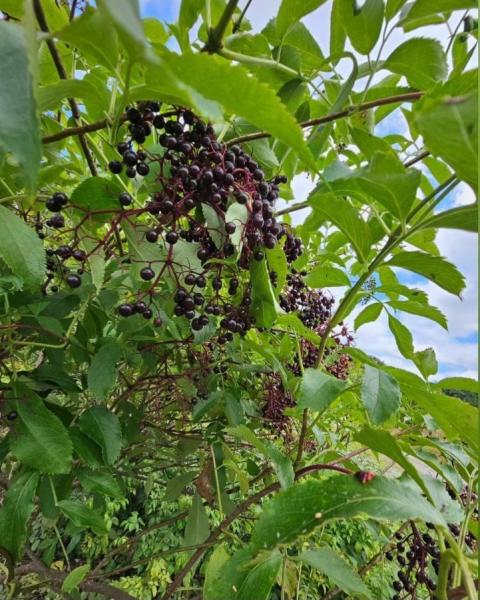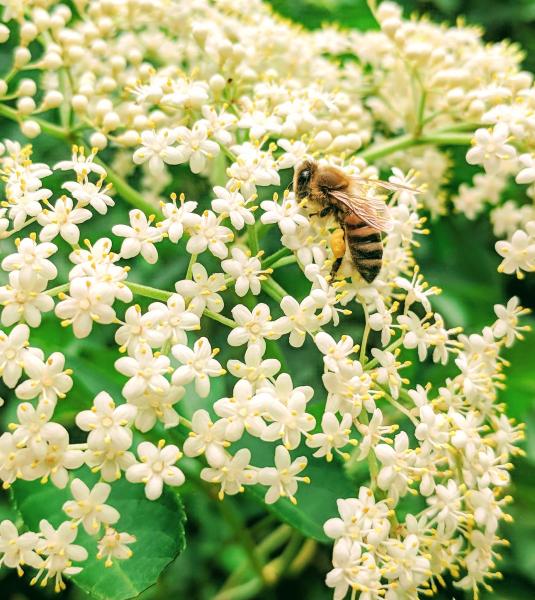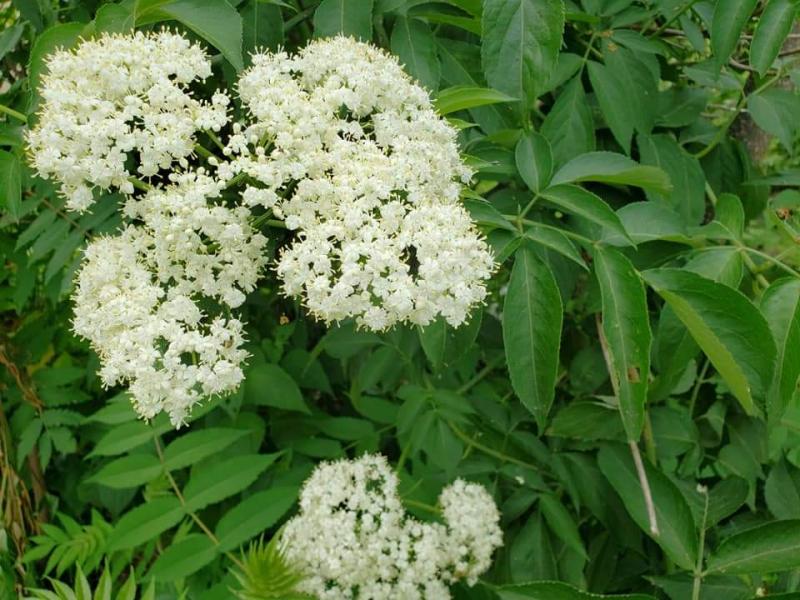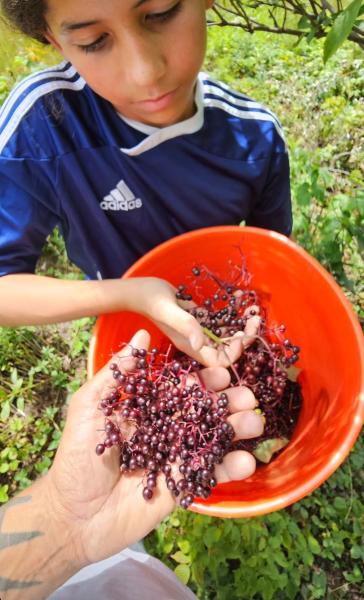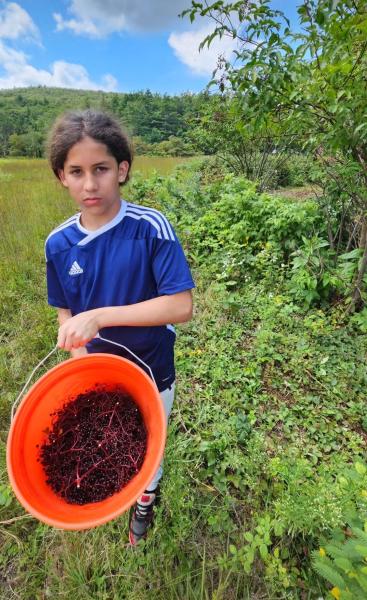Black Elderberry & Red Elderberry
Sambucus canadensis L. and Sambucus racemosa L.
Caprifoliaceae/ Adoxaceae
Image

Close-up photo of Elder flower inflorescence, petals and pistils highlighted, Photo credit: Bat Cave Botanicals, 2022
Names and Their Meanings
Black Elderberry - Sambucus canadensis
Kanienʼkéha
orá:se
Anishinaabemowin
papashkisiganak (-oon, plural)
Red Elderberry - Sambucus racemosa
Kanienʼkéha
ahrhakéha
Anishinaabemowin
papashkisiganak (-oon, plural)
French
Sureau à grappes
Black Elderberry
Description
These two species of Elderberry have long been used by Haudenosaunee and Anishinaabe as food, medicine, and sources of dye. Frederick Wilkerson Waugh’s teachers at Six Nations of the Grand River described Elderberries at the turn of the 20th Century as growing plentifully along the Grand River and in neighborhoods; both the berries and flowers were used as a medicine for colds and other respiratory ailments and for their immune-boosting qualities, and in foods like syrups, pies, tarts, and eating the berries on their own.
Conservation Status
S5 (Secure) in Ontario and Québec
Red Elderberry
Conservation Status
S5 (Secure) in Ontario and Québec
